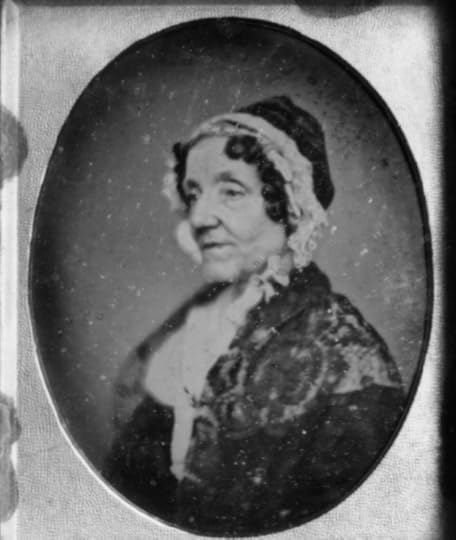Understanding Mr Vincent’s ethnic ambiguity in, Belinda (1801). Race and Regency#4
Mr Vincent. A wealthy, charming, popular and good-natured gentleman with emotional depth, and believable and significant flaws. Vincent is described in the first edition of Maria Edgeworth’s 1801 novel, Belinda, thus:
‘ Mr. Vincent was a creole ; he was about two-and-twenty: his person and manners were striking and engaging; he was tall, and remarkably handsome; he had large dark eyes, an aquiline nose, fine hair, and a manly sunburnt complexion; his countenance was open and friendly, and when he spoke upon any interesting subject, it lighted up, and became full of fire and animation.’
 Maria Edgeworth (1768–1849) in an 1841 photograph.
Maria Edgeworth (1768–1849) in an 1841 photograph.In writings from the Regency Era, the term ‘creole’ is rather ambiguous. At a surface level, it refers to a person native to the West Indies —any child, of any race, born and raised in the West Indies. Creole persons born to Black parents were often distinguished as ‘African Creole’ or ‘Afric Creole.’ The singular term ‘creole’ is less clear in its meaning.
Academics are not in agreement about how to approach characters described as ‘creole’ in literature of this period. While some contradict suggestions that the term necessitated non-whiteness, most appear to concede that the descriptor was intended to elicit doubt about an individual’s claim to ‘racial purity’.
Edgeworth describes Mr Vincent’s features as being stereotypically English, with the exception of his dark eyes and sunburnt (tanned) complexion.
Knowing the implied racial ambiguity that accompanied his designation as ‘a creole’ Edgeworth’s choice to add features to Mr Vincent that emphasise rather than quash such questions in the mind of her readers is significant.
Many interpretations of Mr Vincent, and Edgeworth’s decision to make shocking revelations about his character that lean heavily into common 19th-century negative stereotypes about Black Africans, understand and analyse him as a romantic figure of both White and Black heritage.
Belinda does have an acknowledged and unambiguously Black character, Vincent’s servant, Juba. While much of Juba’s appearance in the novel appears to be for comedic effect, he has a mini-plot of his own, ending up, in the first edition, marrying a White English girl.
This mini plot was removed in subsequent editions of the novel, with Edgeworth explaining this decision in 1810:
‘My father says that gentlemen have horrors upon this subject, and would draw conclusions very unfavourable to a female writer who appeared to recommend such unions.’
Later editions of the novel also saw changes to Mr Vincent’s role as Belinda’s secondary love interest, with moments of romantic tension being reduced and a proposal scene entirely removed.
This convinces me that Edgeworth intended Vincent’s character to be of both White and Black heritage. Having made a point of adding an interracial marriage mini-plot to the story, it seemed unlikely that subtle hints of Mr Vincent’s mixed heritage were accidental.
That Edgeworth would return to the text and remove romantic tension between Belinda and Mr Vincent after being chastised for including interracial love in her novel seems to suggest two things:
Mr Vincent’s character was viewed by Edgeworth and her readers as being of mixed ethnicity. Why else would she remove and change scenes that increased tension and suspense in the story?Black and mixed ethnicity characters were considered as acceptable characters within Regency Era fiction, but not as viable love interests for White women. You’ll remember from previous blog posts about the particularly sour feelings towards interracial relationships amongst even ‘liberal’ Regency Era folk. Edgeworth’s father was possibly trying to avoid associated implications that his daughter was sexually licentious — a common accusation directed at White women who held romantic affections for Black men.I hope you’ve enjoyed this exploration of Mr Vincent’s racial ambiguity. We’re not done yet with Edgeworth’s, Belinda. An analysis of Juba’s portrayal, and the novel’s use of common stereotypes associated with Black and Jewish characters will come in later episodes of ‘Race and Regency.’
Adieu for now! :-)
[image error]


